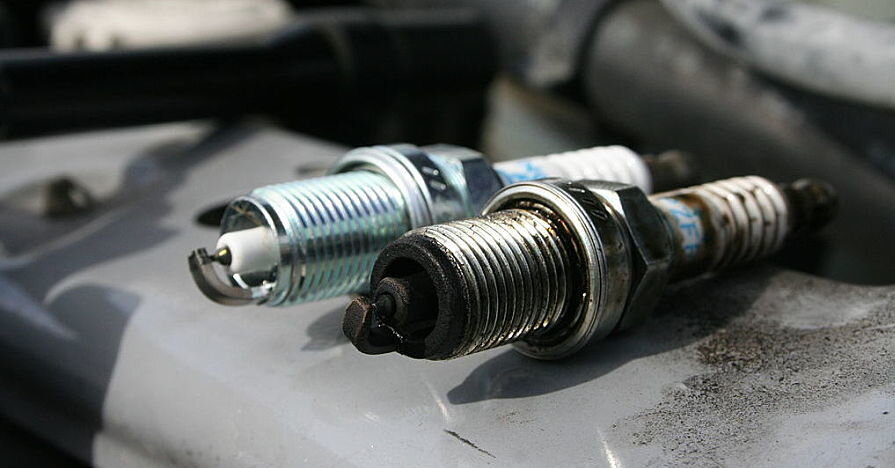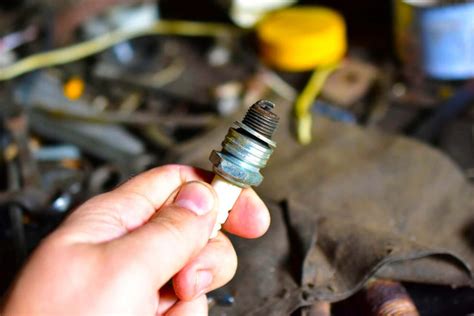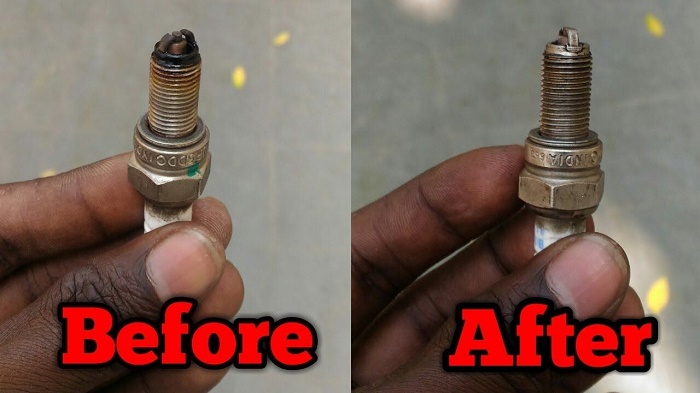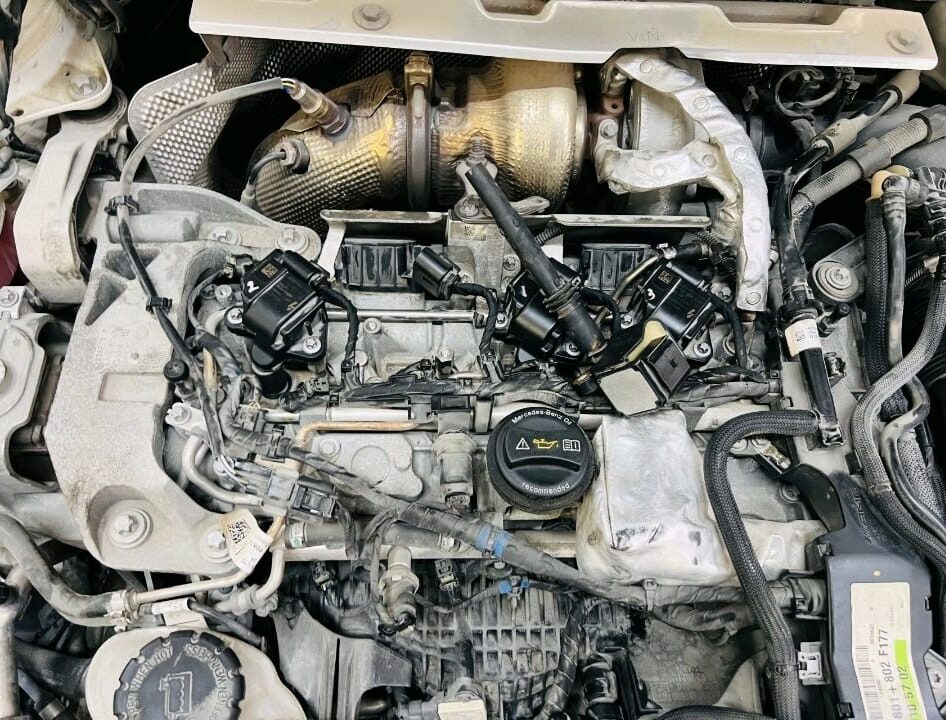How to clean spark plugs involves removing them from the engine, using a wire brush or sandpaper to scrub off carbon deposits, and cleaning them with carburetor or brake cleaner for stubborn residues.
Spark plugs are essential components of your vehicle’s engine, playing a vital role in igniting the air/fuel mixture within the engine’s cylinders. Over time, spark plugs can become dirty or fouled with carbon deposits, oil, and other residues, which can lead to engine misfires, rough idling, and poor fuel efficiency. Cleaning spark plugs is an excellent way to maintain your vehicle’s performance and save money by avoiding unnecessary replacements.
In this comprehensive guide, we’ll show you how to clean spark plugs effectively, explain the common tools and materials you’ll need, and provide step-by-step instructions to ensure your engine runs smoothly.

Contents
- 1 How to Clean Spark Plugs
- 2 Step-by-Step Guide to Cleaning Spark Plugs
- 3 Tips for Maintaining Clean Spark Plugs
- 4 Frequently Asked Questions
- 5 Conclusion
How to Clean Spark Plugs
Before you begin cleaning your spark plugs, it’s essential to gather the necessary tools and materials. Below is a list of the basic items you’ll need:
- Spark Plug Socket and Ratchet Wrench: To remove the spark plugs from the engine.
- Wire Brush or Sandpaper: For cleaning carbon deposits off the spark plugs.
- Carburetor Cleaner or Brake Cleaner: To remove stubborn residues.
- Compressed Air or Blow Gun: To dry and remove any remaining debris from the spark plugs.
- Spark Plug Gap Tool: To check and adjust the gap between the spark plug electrodes.
- Anti-Seize Compound: To prevent the spark plugs from seizing in the engine.
- Safety Gloves and Goggles: For personal protection while handling the spark plugs.
Having these tools ready will make the cleaning process much easier and ensure you do the job properly.
Step-by-Step Guide to Cleaning Spark Plugs
Cleaning spark plugs is a relatively simple process, but it requires careful attention to ensure the plugs are restored to their optimal condition. Follow these steps to clean your spark plugs efficiently.
1. Preparation: Safety First
Before starting the cleaning process, it’s essential to take safety precautions and ensure the engine is cool and ready for work.
- Turn Off the Engine: Always ensure the engine is turned off before working on any components.
- Disconnect the Battery: Disconnecting the negative terminal of the battery ensures no electrical currents are running while working on the vehicle.
- Allow the Engine to Cool: If the engine has been running recently, give it time to cool down to avoid burns or injuries.
- Wear Safety Gear: Use safety gloves and goggles to protect yourself from any debris or cleaning chemicals.
Once you’ve taken the proper safety measures, you can begin the process of removing the spark plugs from the engine.
2. Locate and Remove the Spark Plugs
The next step is to locate and remove the spark plugs from the engine. Refer to your vehicle’s manual for specific instructions on where the spark plugs are located.
- Remove the Ignition Wires: Begin by removing the ignition wires or coils attached to each spark plug. Gently pull the wire off, taking care not to damage it.
- Use the Spark Plug Socket: Once the wires are removed, use a spark plug socket to unscrew the spark plugs. Turn the socket counterclockwise to remove each spark plug.
- Inspect the Spark Plugs: Before cleaning, inspect the spark plugs for any visible damage, such as cracks or heavy fouling. If the spark plugs are severely damaged, it’s best to replace them instead of cleaning.
3. Clean the Spark Plugs
Now comes the most important step: cleaning the spark plugs. There are several methods for cleaning spark plugs, depending on how dirty they are and the type of deposits present.
Method 1: Wire Brush or Sandpaper
- Scrape Off Carbon Deposits: Using a wire brush or fine-grit sandpaper, gently scrub the spark plug electrodes to remove carbon buildup and other residues. Take care not to damage the electrodes while cleaning.
- Clean the Threads: Also, clean the threads of the spark plug to remove any dirt or debris that may have accumulated over time.
- Blow Off Loose Debris: Use compressed air or a blow gun to blow off any remaining dirt or debris from the spark plug.
Method 2: Carburetor Cleaner
- Spray the Carburetor Cleaner: For more stubborn deposits, spray carburetor cleaner or brake cleaner onto the spark plug, focusing on the electrodes. Let the cleaner sit for a few minutes to break down the residue.
- Scrub if Necessary: After letting the cleaner sit, use a wire brush to scrub the remaining deposits off the spark plug.
- Dry the Spark Plug: Once clean, use compressed air to remove excess cleaner and moisture from the spark plug.
Method 3: Torch Cleaning
- Heat the Spark Plug: In cases of heavily fouled spark plugs, a propane torch can be used to burn off the deposits. Hold the spark plug over the flame and allow the tip to heat up.
- Cool and Inspect: Once the deposits are burned off, allow the spark plug to cool down before handling it.
- Clean the Threads: Use a wire brush to clean any remaining debris from the threads of the spark plug.
4. Check and Adjust the Spark Plug Gap
After cleaning the spark plugs, it’s essential to check the spark plug gap to ensure it is within the manufacturer’s specifications. The spark plug gap is the distance between the center electrode and the side electrode.
- Use a Gap Tool: A spark plug gap tool is used to measure the gap between the electrodes. If the gap is too wide or too narrow, use the tool to adjust it by gently bending the side electrode.
- Follow Manufacturer Specifications: Always ensure the gap is set according to the specifications in your vehicle’s manual to ensure proper engine performance.
5. Reinstall the Spark Plugs
Now that the spark plugs are clean and ready, it’s time to reinstall them.
- Apply Anti-Seize Compound: To prevent the spark plugs from seizing in the engine, apply a small amount of anti-seize compound to the threads of each spark plug.
- Hand Tighten: Begin by threading the spark plug into the engine by hand to avoid cross-threading.
- Tighten to Specifications: Once the spark plug is in place, use a torque wrench to tighten it to the manufacturer’s recommended torque. Avoid over-tightening, as this can damage the threads or spark plug.
6. Reconnect the Ignition Wires
After the spark plugs are reinstalled, reconnect the ignition wires or coils to each spark plug. Make sure the connections are secure and that no wires are damaged.

Tips for Maintaining Clean Spark Plugs
While cleaning spark plugs can restore performance, it’s also essential to follow some best practices to ensure the spark plugs stay in good condition:
- Regular Maintenance: Clean your spark plugs every 10,000 to 20,000 miles, depending on your driving habits and the type of fuel used.
- Use High-Quality Fuel: Using good-quality fuel can help reduce carbon buildup on the spark plugs.
- Avoid Overheating: Prevent the engine from overheating, as excessive heat can cause permanent damage to the spark plugs.
- Replace When Necessary: If cleaning doesn’t restore performance, or if the spark plugs are cracked or heavily worn, replace them with new ones.
Related Article
Why Do Some Engines Have 3 Spark Plugs Per Cylinder?
What Spark Plug Brand Does Toyota Use?
Can Spark Plug Gap Cause Misfire?
Frequently Asked Questions
Here are some FAQs about cleaning spark plugs –
1. How do I know if my spark plugs need cleaning?
If your engine is misfiring, has difficulty starting, or experiences rough idling, your spark plugs may need cleaning. Inspect them for carbon buildup or damage.
2. Can I clean spark plugs without removing them?
While it’s possible to clean spark plugs in place using carburetor cleaner and compressed air, removing them allows for a more thorough cleaning.
3. How often should I clean my spark plugs?
You should clean your spark plugs every 10,000 to 20,000 miles, depending on your vehicle and driving conditions.
4. Can I use WD-40 to clean spark plugs?
WD-40 can be used to loosen carbon deposits but should be followed by a wire brush or sandpaper to remove the residues.
5. What if my spark plugs are heavily fouled?
If your spark plugs are heavily fouled, cleaning may not restore them. In such cases, replacing the spark plugs is recommended.
Conclusion
Cleaning spark plugs is a simple yet effective way to maintain your vehicle’s engine performance. Regular cleaning helps prevent issues such as misfires, rough idling, and poor fuel efficiency. By following the steps outlined in this guide, you can extend the life of your spark plugs and keep your engine running smoothly.





